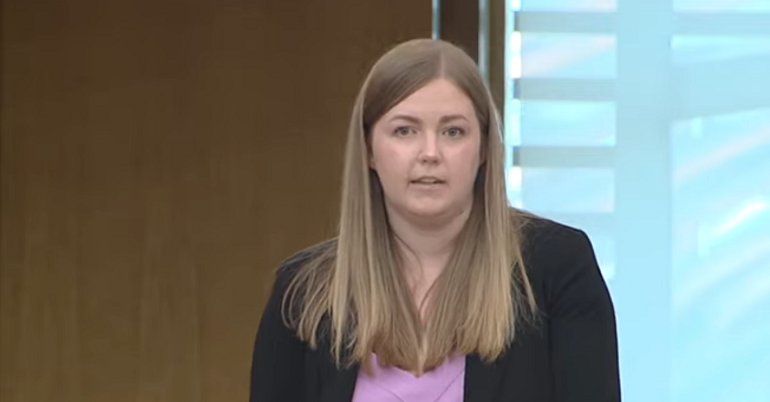Introducing the Land Issue Part 2: Why it Matters and How it Can Change
“The impact of the land tenure system goes far beyond land use. It influences the size and distribution of an area’s population; the labour skills and the entrepreneurial experiences of the population; access to employment and thus migration; access to housing’ access to land to build new houses’ the social structure’ and the distribution of power and influence. In many areas of rural Scotland, large landowners play a crucial role in local development: they are the rural planners.”1
It’s not controversial that highly uneven land ownership patterns can have warping effects on whole economies. As Cahill notes: “The United Nations…refuses aid to some South American countries with a less intense concentration of land ownership than Scotland, unless land reform programmes, including the redistribution of land, are undertaken.”2 What follows are some examples of this and, naturally, some ways in which we might start moving forward.
Pressure on housing is one problem. Land is expensive in part due to a large concentration of ownership. As Macmillan points out: “With more landowners, there would be greater competition among landowners, hence lower land prices…”3 Expensive land, in turn, makes it harder to build new houses. As Shelter note in a report on housing in rural Scotland: “…the huge concentration of land in a small number of hands can distort access to land. And housing investment, just like any other form of investment with long payback periods, may not be helped by the volatile and unregulated land market in Scotland.”4 Another, more incendiary version of this position is articulated by journalist Lesley Riddoch who argues: “the single biggest obstacle to the transformation of Scottish rural communities is their lack of control over land…the Big Society in Scotland will remain forever blocked by the power of the Big Landowners – whoever wins at Holyrood”.
The ‘unregulated market’ mentioned by Shelter also results in decisions often being secretive, unaccountable and occurring without community consultation. Of course, much of the land doesn’t even end up on the market. For example, 25% of estates over 1 000 acres have been held in the same family for over 400 years. In the Highlands, 50% per cent haven’t been exposed for sale since World War II.5
I’m not writing this from the position that neoliberal reforms and a totally ‘free market’ in land would improve matters all that much. However, by understanding the shortcomings of a tiny number of ‘rural planners’ – to use MacGregor’s phrase – we can start to think about how the situation might be improved and, crucially, made more democratic and participatory. Already, the Scottish Agricultural College has found that Community Land Ownership contributes to rural development by creating new jobs, build affordable housing and develop infrastructure.
The current systems lack of accountability can also have dire environmental consequences. In South Lanarkshire the Earl of Home, owner of 30 000 acres, permitted Scottish Coal to open a fifth opencast coal mine within a 5km area near Douglas and Uddington. Here, the nearby communities (who sent over 700 letters of objection to the plan, out of a population of 1000) will be subject to increased noise, a constant stream of Heavy Goods Vehicles, destruction of the local environment and, it is alleged, an increased risk of illness due to poisoned ground water and coal dust. The project spawned a seven month long protest camp which was ultimately evicted by Scottish Coal. While the Council certainly share some of the blame, this is clear evidence why land ownership matters.
Agriculture also suffers under the present model. As John McEwen, the first modern chronicler of Scotland’s land ownership, argued:
“My own estimate of the quality of husbandry, over all, is that, in the ‘arable areas productivity is around 60 per cent of its potential, whereas in the huge ‘upland’ or marginal land area it barely reaches the 50 per cent mark…The use of the uplands and rough grazing areas as a playground for blood sportsmen accounts for the huge loss we estimated there.”6
This account, written in the late 1970s, cannot be assumed to be fully accurate today, but it does throw up the important question of the landowner’s priorities. McEwen’s ‘blood sportsmen’ are, of course, the owners and purveyors of Scotland’s large number of ‘sporting estates’. These places, which provide private hunting grounds for the owners and their guests, have become a characteristic feature of the Highlands since the mid-nineteenth century. At present they cover over 50% of the Highlands, divided between 340 estates, which typically range from 5000 to 8000 acres.7 While there may be, perhaps, debates to be had about the relative merits of killing huge numbers of animals for fun while killing protected species or over-populating the area with deer, the principal issue for me is about democracy. As Bryan McGregor argues, the primary motivation for many of the frequently absentee landlords – which may comprise as many as 66% of the owners8– is simply sport and private enjoyment, not the needs of the community as a whole. “…if land development and consequent employment creation are to be pursued as policy objectives” he writes “then a more direct and directive approach is required. Fundamentally, this requires a challenge to the property rights of existing holders.”9
Moving Forward
There have undeniably been improvements in recent years. Of these, the ‘Community Right to Buy’ has had the most attention, but remains patchy and incomplete. For a start, as Wightman has suggested, the right should be extended to include both rural and urban areas. The right is also limited because it applies only to land which the landlord has put up for sale, and does not address the significant power the landlords still wield, being able to both withdraw the land from sale and conduct secret deals to circumvent the process.10
Further solutions are many and varied. While limitations on the rights of private property might seem radical to some, there are a myriad of European examples. Sweden, for example, gives Country Agricultural boards power to ensure that purchasers must use the productive potential of the land that they buy and in New Zealand holdings over a certain size must agree to specific conditions about beneficial land use.11 More information reporting requirements, to circumvent some of the problems noted above, would also be an improvement, as would requirements of residence for landowners and limitations on the size of estates. Reforms of succession law to prevent estates being handed down to the first male heir (a situation which, amazingly, still persists in places) would also split up the estates between various parties. Returning the common good land (see part 1) to the communities is long overdue.
Another idea worth discussing is Land Valuation Tax. The basic idea is simple enough: because the value of land increases primarily due to publicly funded initiatives like infrastructure, some of that value should return to the state in the form of a tax on increased land prices. So owners of land would be taxed on the value of their estate, and if this increased in value due to public works (the building of a tube station, tram works, the council demolishing old housing, etc) this increase in value would be partially recaptured by the body originally financing the improvement. It also has the side effect of reducing some of the bubbling in land values, as ownership comes with an additional cost that would reduce the value that could be gained from speculation and purchasing. This is certainly an intriguing idea, and one that bears further research and discussion.
Above all though, the first step in securing a reform in landownership in Scotland is the creation of a movement to do so. While land reform gained momentum during the first two Scottish parliaments, the momentum has been lost in recent years. Promising signs from the SNP about obtaining control of the Crown Estate and the creation of a Land Use Strategy are welcome. One point worth emphasizing is that improving land management and use isn’t a matter of choosing between an unresponsive state or a remote class of privileged owners. As experience of the Community Right to Buy have shown, there are ways to improve the situation that expand the range of stakeholders and beneficiaries rather than simply transferring ownership to another party. With wind power, for example, perhaps the development of community owned turbines that distribute the profits in a number of directions might be a better option than simple nationalization. The common good fund might also be subject to participatory budgeting and provide directly democratic means of allocating investment.
There isn’t space here to fully develop these alternatives, or the millions of others like them, but we can reaffirm the main point. Scotland has inherited an unjust pattern of land ownership and is now in a position to change it. This process may have started but, whether through lethargy, timidity or lack of political support, it is increasingly losing steam. The remainder, therefore, may be up to us.
1 Professor Bryan MacGregor “Land Tenure in Scotland” (1993) McEwen Memorial Lecture. I found this originally in Corbett and Wightman, n. 3 pp. 4
2 Cahill, K Who Owns Britain? (2000) Canongate pp. 181
3 Macmillan D, C. An economic case for land reform (2000) Land Use Policy Vol. 17, No.1 pp. 49-57, pp. 56
4 Corbett, G and Wightman, A housing, Homelessness and Land Reform (1998) Shelter Scotland pp. 2
5 Wightman, A The Poor Had No Lawyers: Who Owns Scotland and How They Got it (2010) Birlinn, pp. 256
6 McEwan, J Who Owns Scotland?: Study in Landownership (1977) University of Edinburgh, Student Publishing Board. Pp. 104-5
7 Wightman n.5 pp. 163
8 Ibid. 169
9 McaGregor, D. Bryan Owner Motivation and Land Use on Landed Estates in the North-west Highladns of Scotland (1988) Journal of Rural Studies, Vol. 4, No. 4 pp. 389-404, pp. 403-4
10 Wightman n.5 pp. 301
11 Wightman, A Who Owns Scotland (1997) Canongate pp. 190



Leave a Reply